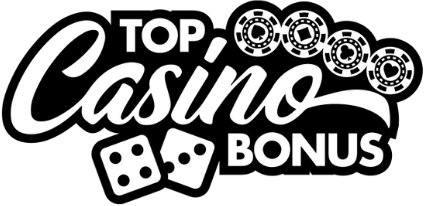The role of zero (and double zero) in roulette
The thing most rookies miss in roulette isn’t luck, it’s zero. That lonely green number, often misunderstood, is the house’s hidden ace. If you’ve ever watched a game get derailed by a single spin landing on zero, you know what I mean. And if we bring in the American wheel? Now we’ve got two zeros wreaking havoc on your odds. This isn’t just about random outcomes, it’s about how the rules of the game quietly work against uninformed players.
Table of contents
The real nature of zero in roulette
Before you even place a chip, the zero determines the house edge. In European roulette, there’s one green zero. American roulette adds a second, the infamous double zero, and just like that, your odds sink like a lead weight. Plenty of eager punters chase the payout without understanding the fundamental mechanics driving the game underneath.
The ghost that haunts outside bets
Let’s talk ratios. Red/Black, Even/Odd, 1-18/19-36, straight-up 1:1 payouts, right? But wait, with that zero lurking on the table, your supposed 50% shot is really closer to 48.65% on a European table. On an American table? It drops further to 47.37%. That’s not a rounding error. That’s the difference between walking away whole and bleeding out slowly across sessions.
A silent parasite on long-term play
In countless hours of watching seasoned players, real grinders, the mistake is trusting their gut while ignoring the green devil. Over time, zero acts like a slow siphon on your bankroll. You’ll be thinking it’s variance or a cold table. But what you’re really seeing is structural attrition from the odds baked in by the zeros.
House edge: the quiet killer
Let’s not dance around it, the house edge exists because of the zero. In European roulette, you’re looking at 2.70%. That’s manageable if you’re smart. But double zero in American roulette? Now it’s 5.26%, nearly double. That extra zero doesn’t just cost you money; it costs you time at the table. Your session ends sooner, your volatility rises, and your long-term losses compound.
The American wheel trap
Many learning players get pulled into flashy American-style games, especially online. They see bigger payouts and assume it’s the same game. It isn’t. 38 numbers instead of 37 adds more dead space for the ball to land, and guess where it likes to fall more often than you suspect? Right. One of those cursed green holes that nobody bet on.
There’s a reason pros stick to single-zero
I’ve sat beside hardened French bettors who’d scoff at the idea of playing on a double-zero table. They call it the fool’s wheel. And they’re not wrong. Strip away all the lights and streaming glitz of today’s live dealer roulette, and the math remains untouched. That extra zero is a creeping shadow you can’t outplay.
Zero’s tactical implications in gameplay
Once you accept that the zero is not a neutral number but the house’s best friend, your strategy shifts. No more charging in blind on even-money bets, you now build play around how to mitigate exposure to zero and occasionally benefit from its surprise appearance.
Called bets and insurance
Veterans sometimes toss small chips on the zero or split bets like 0, 1, 2, and 3 precisely as insurance. It’s not about chasing the big win, it’s about buffering against its disruptive role. A €1 chip on zero when it hits covers a whole lot of Red/Evens you just lost.
Sector targeting on European wheels
If you’ve mapped real wheels or tracked rotor behavior over thousands of spins like I have, and I’ve got notebooks full of them, you’ll know some tables lean toward certain zones. Zero’s position in the wheel layout becomes strategically relevant. The neighbors of zero (3, 26, 32, 15, etc.) aren’t just nearby, they’re statistically sticky on some layouts.
The zero across software platforms
Now, shift gears into the digital world. Not all roulette software handles randomness the same way. That’s why you’ve got to vet your platform before committing chips. I’ve tested a stack of systems, and let me tell you, differences in RNG implementation and return-to-player (RTP) models can alter how that zero behaves over time.
Quickspin and algorithmic flow
Games built with Quickspin software often boast great visuals but may abstract the wheel’s bias for streamlined play. That’s fine for casuals, but serious players crave transparency in randomness, especially regarding zero frequency over sessions.
Red Tiger’s stability versus volatility
Red Tiger Gaming tends to balance aesthetics and algorithm better. Their wheels seem to mimic physical zero placement behavior more accurately, albeit with a nudge toward variance. You feel the zip, but the integrity holds.
WMS and legacy behaviors
Old-timers like me used to operate on WMS systems back in physical cabinets, their online evolution stays pretty loyal to authentic wheel frequencies. A good zero hit ratio (roughly 2.7% on Euro layouts) checks out with long-term sample logs I’ve tracked since the late ‘90s.
The subtlety of Thunderkick
Watch out for abstraction in Thunderkick roulette offerings. Their creative spin often sacrifices traditional layout logic. That’s fun for slots, but dicey for high-stakes roulette players who count on precise zero intervals to time their wagers.
Final thoughts: zero is your teacher
Call it harsh, but zero is roulette’s truth serum. It shows who’s really watching the table and who’s just spinning dreams. Understand it, not fear it, and you start playing roulette like a chess player, not a coin flipper. If the double zero is staring you in the face, walk away. Stick to single-zero tables where you can at least fight with fair odds. Remember: real mastery begins the moment you respect the smallest details. And in roulette, nothing is smaller, or more brutal, than that little green number.





0 Comments